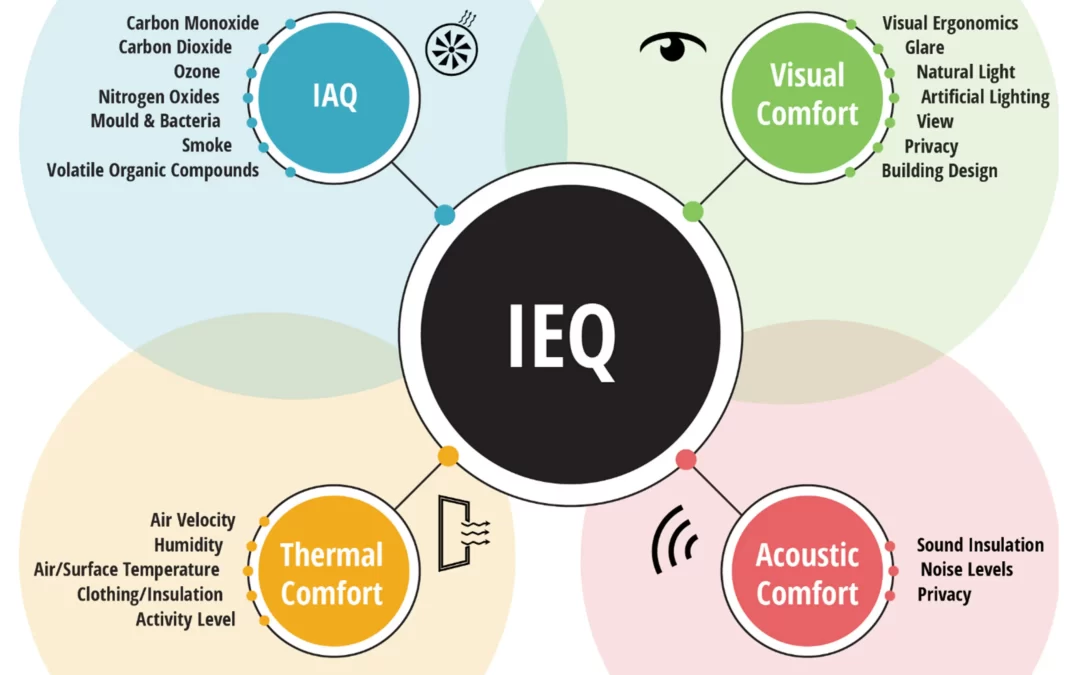Indoor air quality and indoor environmental quality are two terms that are often mixed up because their acronyms are akin, and concepts overlap.
Indoor air quality (IAQ) quantifies the minimum acceptable air quality that promotes the health and comfort of human occupants. IAQ is a measurement of the building’s interior air in terms of the occupant’s potential health and comfort. Nasty chemical, physical and biological contaminants can cause symptoms ranging from discomfort to serious illness. Potential contaminants can include dust, cigarette smoke, carbon dioxide, carbon monoxide, ozone, radon, VOCs (volatile organic compounds), and various other chemical compounds from the outgassing of building materials and cleaning supplies. Careful selection of building materials and cleaning agents and having air filters and sufficient ventilation increases air quality. Ideally, the indoor air quality should be equal to or even better than that of the air outside the building.
Indoor environmental quality (IEQ) is a broader term that includes many factors such as air quality, lighting, visual quality, acoustics, and thermal comfort inside the building that affects the health and well-being of the occupants—it’s about what we breathe, see, hear and feel inside a building. IEQ is a measure of these multiple aspects of an indoor environment on human health and performance.
IEQ is a critically important credit category in the LEED (Leadership in Energy and Environmental Design), Green Globes, and other sustainable and ‘green’ rating systems. The most significant components of IEQ (IAQ, thermal comfort, and lighting) are greatly enhanced by a BAS (Building Automation System–both for HVAC and lighting), which nearly every green building has.
IAQ is a subset of IEQ but plays a massive part in promoting the quality indoor environment and building experience. The difference between IEQ and IAQ can be subtle, but understanding the overlap of both concepts is vital to creating healthier and safer indoor environments. A well-designed building focused on enhancing IAQ and IEQ is beneficial for the planet and is also better for business. It increases the productivity and wellness of the occupants. Green building safeguards human and environmental health and our collective future.
It’s crucial to select an engineering firm that understands the difference and will help you make the best decision for your building and needs. Ensure the MEP firm you choose for your essential project reads past the typical ASHRAE 55 and 90.1 and understands ASHRAE standards 62.1 and 189.1 as they are paramount in the success of obtaining a truly ‘green’ space. Let us help you provide acceptable IAQ and human thermal comfort while optimizing energy efficiency in your building–your staff, and wallet, will thank you!

Recent Comments